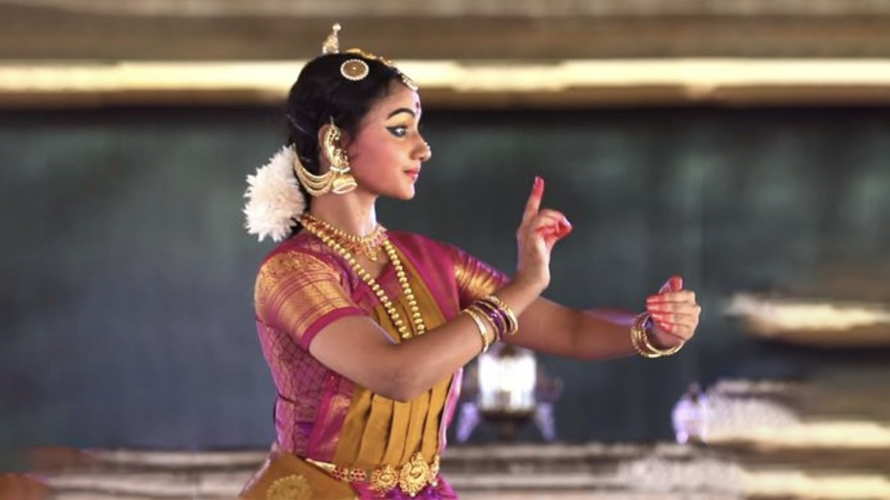Kuchipudi, one of the most expressive and vibrant Indian classical dance forms, is renowned for its dynamic footwork, graceful transitions, and precise body balance. Unlike some other classical dance forms that focus on rigid postures, Kuchipudi’s movements are more fluid, theatrical, and energetic, requiring dancers to maintain perfect coordination between footwork and body control. In this blog, Nrityangana explores the significance of dynamic footwork and body balance in Kuchipudi, how they enhance performance, and the techniques to perfect them.
The Importance of Footwork in Kuchipudi
In Kuchipudi, footwork (Pada Bhedas) plays a crucial role in setting the rhythm and enhancing expressions. The dance form is known for its quicksilver movements, rhythmic tapping, and intricate patterns, all of which require agility and precision.
Key Features of Kuchipudi Footwork
- Laya (Rhythm) – Foot movements sync seamlessly with musical beats, ensuring a graceful and lively performance.
- Fast and Fluid Movements – Unlike Bharatanatyam’s deep-seated postures, Kuchipudi’s footwork involves swift transitions, light jumps, and delicate foot placements.
- Tarangam Balance Technique – One of the most iconic aspects of Kuchipudi is dancing on a brass plate, which requires extraordinary foot coordination and balance.
Common Footwork Techniques in Kuchipudi

Mandalas (Standing Postures)
- These are the foundational stances that dictate body weight distribution.
- Examples include Samapada Mandala (feet together) and Prerita Mandala (one foot forward, the other back).
Charis (Leg Movements)
- Forward and backward movements that give a sense of motion and storytelling.
- Examples include Akrishta Chari (dragging foot forward) and Apakrama Chari (stepping back gracefully).
Kuttu Adavus (Rhythmic Foot Tapping)
- The primary method of producing rhythm through strong, controlled foot taps.
- Helps in enhancing synchronization with musical beats.
Tarangam Plate Dancing
- A unique feature of Kuchipudi, where dancers balance on the edges of a brass plate while executing movements.
- Requires years of practice to perfect foot pressure and weight distribution.
Mastering Body Balance in Kuchipudi
Since Kuchipudi involves continuous movement, rapid foot transitions, and challenging postures, maintaining body balance is crucial for a polished performance. Without proper balance, the graceful effect of Kuchipudi’s movements is lost.
Challenges in Maintaining Balance
- Improper weight distribution leading to instability.
- Lack of core strength affecting control over movements.
- Sudden posture shifts making transitions unsteady.
How to Improve Body Balance in Kuchipudi

- Strengthen the core to improve stability, especially during fast transitions. Yoga and balance exercises like Vrikshasana (Tree Pose) help in achieving better control.
- Focus on posture alignment by keeping the spine straight and distributing weight evenly on both feet. Avoid leaning too far forward or backward while dancing.
- Perfect Tarangam balance by keeping knees slightly bent and focusing on gentle shifts in pressure. Beginners should start with slow movements before attempting faster sequences.
- Work on controlled transitions between jumps, spins, and foot taps. Smooth movements create a more refined and elegant performance.
The Interplay of Footwork and Balance in Kuchipudi
The perfect Kuchipudi performance is an interplay of precise footwork and well-maintained balance. Without dynamic foot movements, the dance loses its rhythm, and without stability, the grace of movements diminishes. Nrityangana emphasizes that dancers must train their bodies to seamlessly integrate speed with control, making every movement look effortless.
Conclusion: Achieving Perfection in Kuchipudi Movements
Mastering dynamic footwork and body balance in Kuchipudi requires dedication, discipline, and consistent practice. The fast-paced movements, rhythmic tapping, and graceful balance make Kuchipudi an aesthetically mesmerizing dance form. By focusing on proper technique, core strength, and precise coordination, dancers can achieve both agility and elegance in their performances. At Nrityangana, we celebrate the artistry and discipline that goes into making every Kuchipudi performance a masterpiece.


